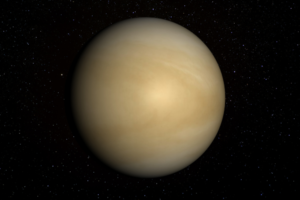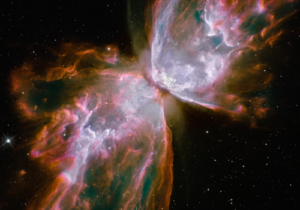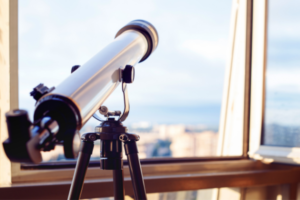Can Telescopes See Through Light Pollution
In the recent years professional and amateur astronomers alike have been affected by the considerable amount of light pollution in the cities and have often wondered if a telescope can see through the brightened night sky.
Key Takeaways:
- You can see some bright deep sky objects, the Moon and other bright stars and planets even from a light polluted areas.
- Light pollution adversely affects professional and amateur astronomers, because it severely reduces the visibility of stars and other celestial objects.
- The best telescope for exploring the night sky from a light polluted locale is the same one you’d choose for stargazing from your usual location.
Do Telescopes Work In Light Polluted Areas
Although the best views of stars, planets and nebulas can be had under a dark sky away from major population centers and city lights, there are some brighter deep-sky objects that you can see, as well as the Moon, some bright stars and planets i.e. Venus, Mars, Saturn and Jupiter, even from heavily light polluted areas.
A little more than 100 years ago, you could walk outside at night even in a city and see the Milky Way galaxy arch across the night sky. Being able to see thousands of stars was part of everyday life, inspiring artists like Van Gogh or musical composers like Holst or writers like Shakespeare.
By allowing artificial lights to wash out our starry night skies, we are losing touch with our cultural heritage (e.g., what has made us who we are). We are also losing touch with what could inspire future generations.
With more than half of the world’s population now living in cities, it can be difficult to appreciate a true, dark night sky. With so much happening on the ground, we can forget to look up. When we do have the opportunity to gaze upon the night sky, the display can be limited by light pollution.
What Is Light Pollution
An easy to understand kid-friendly definition – Light pollution is the unwanted illumination of the night sky by excessive artificial light.
Light pollution adversely affects professional and amateur astronomers, because it severely reduces the visibility of stars and other celestial objects.
The reduction in night sky visibility is a result of “skyglow,” upward-directed light emanating from poorly designed or directed lamps and security floodlights.
This wasted light is scattered and reflected by solid or liquid particles in the atmosphere and then returned to the eyes of people on the ground, obliterating their view of the night sky. The effect of skyglow from a town or city is not necessarily localized; it can be observed far from the main source.
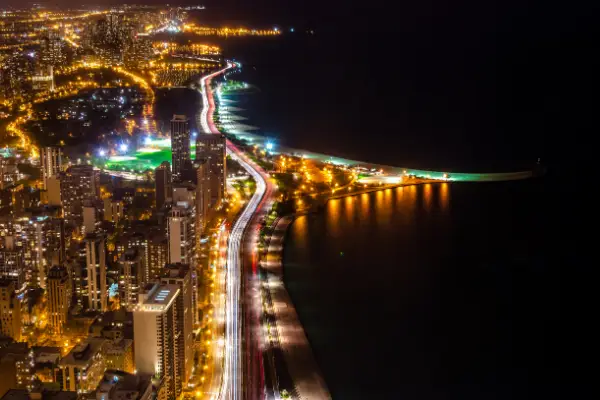
Why Is Light Pollution A Problem
Light pollution is a problem not only for astronomers but it is also responsible for disrupting ecosystems. Light pollution poses a serious threat in particular to nocturnal wildlife, having negative impacts on plant and animal physiology.
It can confuse the migratory patterns of animals, alter competitive interactions of animals, change predator-prey relations, and cause physiological harm.
With respect to adverse health effects, many species, especially humans, are dependent on natural body cycles called circadian rhythms and the production of melatonin, which are regulated by light and dark (e.g., day and night).
If humans are exposed to light while sleeping, melatonin production can be suppressed. This can lead to sleep disorders and other health problems such as increased headaches, worker fatigue, medically defined stress, some forms of obesity due to lack of sleep and increased anxiety. A few studies have also linked light pollution to at least two types of cancer.
Which Is The Best Telescope For Light Pollution
The best telescope for exploring the night sky from a light polluted locale is the same one you’d choose for stargazing from your usual location. That is, a scope that is easy to set up and use, fits your budget and is portable enough to move with it when you’re ready to use it.
When it comes to the aperture size – larger optics collect more starlight, and that applies whether your sky is light polluted or pitch black. You’ll be able to see more objects and resolve fainter detail with an 8″ telescope than with a 4″ one. So get the biggest telescope you can comfortably afford, but one that’s not too difficult to set up and use on a frequent basis, or too bulky to store when it is idle.
If you live in a light polluted area of a city – we recommend getting a telescope with a computerized, or Go-To, mount. It will make pinpointing objects to view much faster, since fewer stars are visible in a bright sky.
You may add a tube extension to block stray side light. This will especially increase contrast if your telescope is a Newtonian reflector.
You can even make your own barrier if nearby line-of-sight lighting is interfering with your hobby. Many people create viewing shields from opaque tarps and PVC pipes.
How To Set Up And Use Telescope In A Light Polluted Area
To see the stars with light pollution you don’t need to travel to a desert, a mountain or even a field. Getting a clear view of the stars from the middle of a city is possible with a little planning.
Find a good spot
The top of a high-rise building may be a great spot for some urban stargazing as it sits above most sources of street-level lighting. However, heat that rises from roofs and pavements can distort the view.
So for best results, set up your telescope on dirt or grass, which absorb much less heat, and avoid aiming directly over nearby buildings. Make sure that the spot is not in the direct line of sight of a street light or light from surrounding buildings.
Give your eyes time to adjust
You will not be able to just go outside and start observing through your telescope. Be patient and give yourself at least 20 minutes to get used to the dark, you can see twice as many stars.
Observe during the wee hours
The amount of light pollution usually decreases late at night, as businesses close and households turn off some of their outdoor lights. Take advantage of the darker skies by observing the night sky around midnight or during the “wee hours” of the morning when possible.
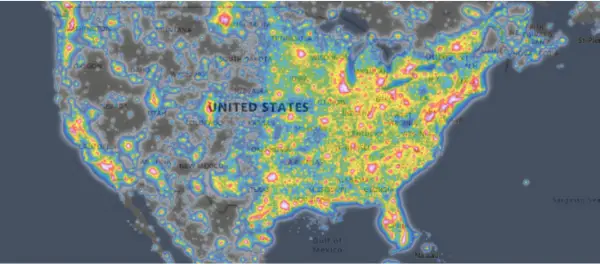
Light pollution map
You may also use Light Pollution Map to find out the perfect dark spot in your neighborhood for a night of urban stargazing. It’s quite easy to read a light pollution map. On the map you will notice that towns and city centers are red and orange, that is where light pollution is severe enough to limit what you see. Yellow, green and blue areas are not that affected by light pollution and fare much better in terms of night sky visibility.
Related:
- How Long Is A Year On Other Planets. Orbital Periods of the Planets
- Can A Telescope See Through Clouds
How To Block/Reduce Light pollution
Get into a shadow
If you have street lights shining into your garden, do your best to find a spot that’s not illuminated by these and which can give you a good view of the sky. Getting into the shadow of a brick wall or a tree can help here. A side of a building can help too.
Travel a few miles out of town
This can be easier said than done, but if you have really poor views of the stars most of the time, it really might be worth the effort to pack up your equipment and drive a few miles out of your town or city to find darker skies.
Shield your telescope
If you can’t shield yourself from stray light, then you can at least shield the equipment you are using. Dew shields on telescopes if short, can be extended using thick card, black or dark in colour and telescope and binocular eyepieces can also be shielded using flexible ‘wings’ which can be usually obtained from dealers. These will help reduce stray light entering your eye from the side. Also, another way of shielding yourself from intrusive light is by covering your head with a dark cloth.
Use opaque fabric
The best way to drastically reduce light pollution is with opaque fabrics. Draper offers a variety of colors and materials from industry-leading fabric providers, including Phifer, Mermet, and Rockland. Fabrics weaves with small openness factors, such as 1 percent, will reduce light pollution, but only opaque fabrics can completely block light from flooding out into the night.
Use light pollution filter
There are filters specifically designed to help reduce the effects of light pollution for astronomers. These often go by the name of City Light Suppression (CLS) or Anti Light Pollution (ALP) filters.
If you choose a filter that focuses on a specific wavelength of light that stars produce a lot of (which can vary from star to star) then you can increase the contrast with the sky and possibly make stars out even in a light polluted sky.
Unfortunately, although filters are useful to increase contrast of a star against the sky they will also cut down the overall brightness (or flux) coming from the star, so you risk making the star too dim to see even against a perfectly black sky.

How To Measure Light Pollution
Technically, light pollution can only be accurately measured by the professional astronomers. They measure the dark portion of the sky with their astronomical equipment to have a background value they can use to compare their star signal against. Professional astronomers use an instrument called a photoelectric photometer to make these measurements. Typically such measurements are made at the zenith, which is the angle pointing directly upwards from the luminaire.
For us backyard astronomers – we can measure light pollution simply by taking a walk in our neighbourhood. As you walk around, observe the areas and try to assess how they are lit. Generally, residential neighbourhoods are brightly lit where as the parks in such urban neighbourhoods offer the darkest skies.
You may use the Dark Site Finder to assess how your area fares when it comes to light pollution.
ABOUT US
We are a team of active amateur astronomers, here to help you with all your astronomy and science related needs – this is anything, from reviewing the latest telescopes to be released to talking about gravity and neurons. The Big Bang Optics was started because of our love for astronomy and to help others like us find the best telescope and accessories.
LEGAL DISCLAIMER
The Big Bang Optics is a participant in the Amazon Services LLC Associates Program, an affiliate advertising program designed to provide a means for sites to earn advertising fees by advertising and linking to Amazon.com. The Big Bang Optics also participates in affiliate programs with Clickbank and other sites. The Big Bang Optics is compensated for referring traffic and business to these companies.

